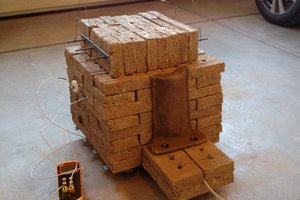Required Max Temperatures:
- PMC: 900C
- PCB Solder: 260C
- Harden/Temper/Carburize/Anneal Steel: 900C/550C/260C
- Pottery (Low fire): 1100C
- Glass: 800C
- Melting Precious Metals (Silver/Gold): 1064C
Max ramp rate required is 1C/s under 260C. Hitting 3C/s is a nice to have.
In-field firmware reprogramming.
Safe to run for 8-10 hours.



 Matt Moses
Matt Moses
 Christoph
Christoph
 extremerockets
extremerockets
Seems like a huge range of temperatures for one machine. How do you plan to hit your target temperatures on both ends of the scale?